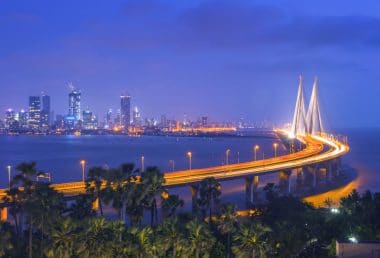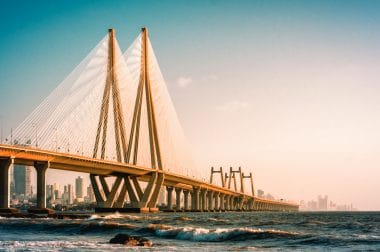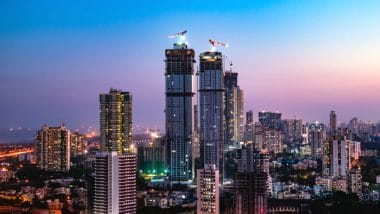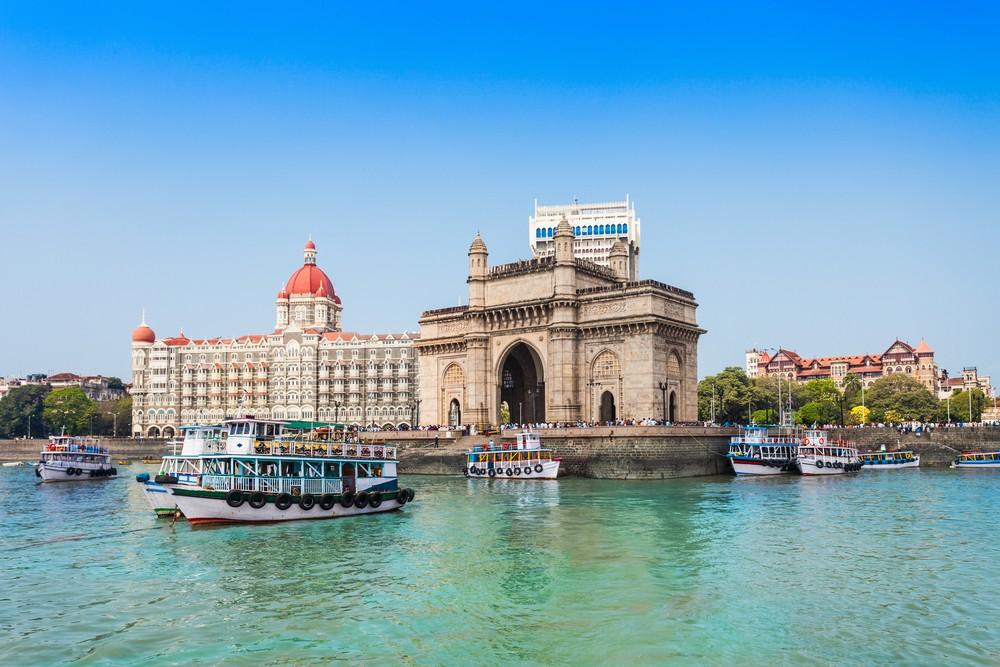Mumbai – like no other, the name of this city in India stands for hope, confidence and greatness. Although it cannot keep up with the old age of some other Indian cities such as Varanasi, nor with the faded royal charm of old Delhi, it is at the forefront of joie de vivre, diversity and sheer dynamism. Mumbai is a miniature cosmos of the entire huge country of India and in many ways always one step ahead of the rest of the country.
Mumbai – Gateway to the Sea
Mumbai was founded in the early sixteenth century by Portuguese sailors, whose scattered churches still characterize the cityscape of some neighborhoods. But it was not until the British in the seventeenth century that the seeds of today’s big city were planted. With elaborate projects, they developed Bombay into the unsurpassed main port of North and West India. This rise attracted numerous immigrants from India and overseas, with the Zoroastrian Parsees, Hindu and Muslim merchant castes from Gujarat, and Mesopotamian Jews noting themselves as successful co-founders of today’s cultural mosaic of Mumbai. The cosmopolitanism and internationality of the city, which is due to its special location, have repeatedly provided it with important creative impulses in the fields of art, culture, architecture and business.
Mumbai Today
Mumbai has remained as young as it has always been. Although there have been one or two challenges to overcome in its history, it can be clearly stated that Mumbai was and continues to be the undisputed pioneer among all Indian cities. It is no coincidence that the Bollywood film industry is based here, making the city the focal point of hopes, fantasies and emotions of half the world. Furthermore, there is a multicultural and religious diversity here, which is enthusiastically celebrated with a high level of tolerance and joy.
Travel and life in Mumbai

For the avid traveler, Mumbai offers a sensational array of sights, delights, and diversions. Mumbai is cosmopolitan, uncomplicated and safe. Even as a newcomer to the country, you get along surprisingly well there. Almost everyone can speak English and tourists still fit wonderfully into the multi-ethnic mosaic. By the way – the term Bombay, if it should pass your lips there, is by no means outdated or politically incorrect. In Hindi, the lingua franca of Bombay, the city continues to be called Hindi, even though the official name Mumbai follows the Marathi language, which is particularly common in the rest of the state of Maharashtra.
Culture for the palate
With Mumbai’s high diversity, it is no wonder that there is a lot to discover in terms of culinary delights. Each ethnic group brings its own recipes to the table and inspires others to perform at their best in the kitchen. To name just a small selection:
Gujarati cuisine offers delicate, subtly spiced mostly vegetarian dishes. Often these are slightly sweet and fruity in taste and stand out from the mainstream in a highly pleasant way. Found throughout the city, but especially authentic in the Bazaar district.
The cuisine of the so-called Goans, mostly Catholic descendants of Portuguese and Indians, is characterized by hearty meat and fish dishes, sometimes refined with vinegar or coconut. Often difficult to find in the rest of India, you should not miss this cuisine. Individual restaurants of this style can be found especially in southern Mumbai, in the districts of Colaba and Fort.
Muslim food is often characterized by generous amounts of meat, although several styles can be found here. On the one hand, the more grilled meat-oriented, milder food of the Afghan immigrants, and on the other hand, the highly aromatic sauce dishes of classic North India. Widespread, found in particularly high density in the eastern Bazaar district.
Furthermore, there are many other cuisine styles in Mumbai, such as South Indian, Punjabi or special fish restaurants. Gastronomy guides available locally are available everywhere and are very helpful.
See, experience and marvel – the highlights in Mumbai

As a dynamic, forward-looking city, Mumbai offers a variety of highly interesting, extremely diverse and easily accessible sights and cultural offerings.
Splendor and wealth
The first thing that strikes us is the magnificent architecture, which produced magnificent buildings in the second half of the nineteenth century. Outstanding here are the main train station Chatrapati Shivaji Terminus as well as the university and the Taj Mahal Hotel. Even if you want to stay a little more modest: A short visit to the Taj Mahal, at least for coffee, is a real must! Mumbai is also home to one of the highest concentrations of Art Deco architecture in the world. The Churchgate and Marine Drive districts are defined by this beautifully elegant style. These areas are also home to some of the city’s best museums and art galleries.
The Bazaar – Living and trading in a confined space
Once you’ve had enough of the magnificent boulevards of southern Mumbai, you’ll turn to the cheerful and chaotic bustle of the Bazaar district. Now a little adventurousness is required, after all, you share the space here with wholesale and retail trade, donkey carts, cattle and thousands and thousands of people. In the old alleys you will come across mysterious gates, colorful temples, and a colorful display of goods that you have never seen anywhere else. The spiritual heart of Hindu Mumbai is located here, in the form of the temple of the goddess Mumba, who gave the city its name.
The Sacred Island

In the evening, when the sun slowly begins to sink over the Indian Ocean, is the best time to visit the tomb of Saint Haji Ali. This is located on a small island in front of the city and is visited daily by thousands of pilgrims of all religions. According to legend, Haji Ali was a miraculous preacher of the fifteenth century. On the way back from the pilgrimage to Mecca, his ship crashed in a storm far out in the ocean and only his body was miraculously washed up at this site off today’s Mumbai. The mausoleum is connected to the land by a narrow footbridge and is only accessible during low tide. In the midst of the spiritual atmosphere of the place, just with a step in the ocean and in the midst of the breeze blowing from the sea, the soul of Mumbai can best be felt: a city of seafarers and adventurers, located in the Orient, facing the world.


